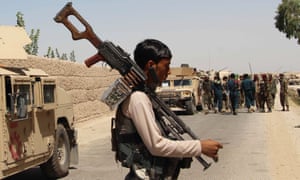by Ralph Peters
August 15, 2016
 Whether or not Islamist terrorists prove capable of executing another attack on the United States on the scale of the strikes of September 11, 2001, we would be foolish to assume they can’t. The desire remains, while the bloodlust and the passion have only intensified. The willingness to sacrifice their lives to do us harm is indisputable. We are more vigilant and—somewhat—less willfully naïve, and grand attacks on the homeland are harder to stage today, but the price of deterrence is high in economic costs, resources, and diverted energies. Even failed attacks trigger expensive, long-term responses.
Whether or not Islamist terrorists prove capable of executing another attack on the United States on the scale of the strikes of September 11, 2001, we would be foolish to assume they can’t. The desire remains, while the bloodlust and the passion have only intensified. The willingness to sacrifice their lives to do us harm is indisputable. We are more vigilant and—somewhat—less willfully naïve, and grand attacks on the homeland are harder to stage today, but the price of deterrence is high in economic costs, resources, and diverted energies. Even failed attacks trigger expensive, long-term responses.
Whichever side we may judge as winning the violent confrontation, the terrorists continue to score impressive economic victories. One largely ignored cause of our economic doldrums has been the diversion of funds, public and private, to security since 9/11. Security costs are dead weight on an economy, money diverted irrecoverably from wealth-generating endeavors. Even when we don’t bleed red, we’re bleeding green.
We have immense reserves of physical and financial power, but the Islamists have strength of will, clarity of purpose, and rigor that dwarf our own. In a contest of raw power, we would win (were crippling restrictions on how we fight rescinded), but in the contest of wills—already under way—we have been thrust onto the strategic and moral defensive (and further into deficit spending).
In another sphere in which we logically should dominate, that of innovation, we’re also losing badly. If there is any single factor that should alarm us, it is the ferocious brilliance of our enemies. They use our laws, our technologies, our customs, even our freedoms against us. They work cheap, operating with the austerity of the guerrilla, but with global reach. We must defend everywhere. They can attack anywhere.













